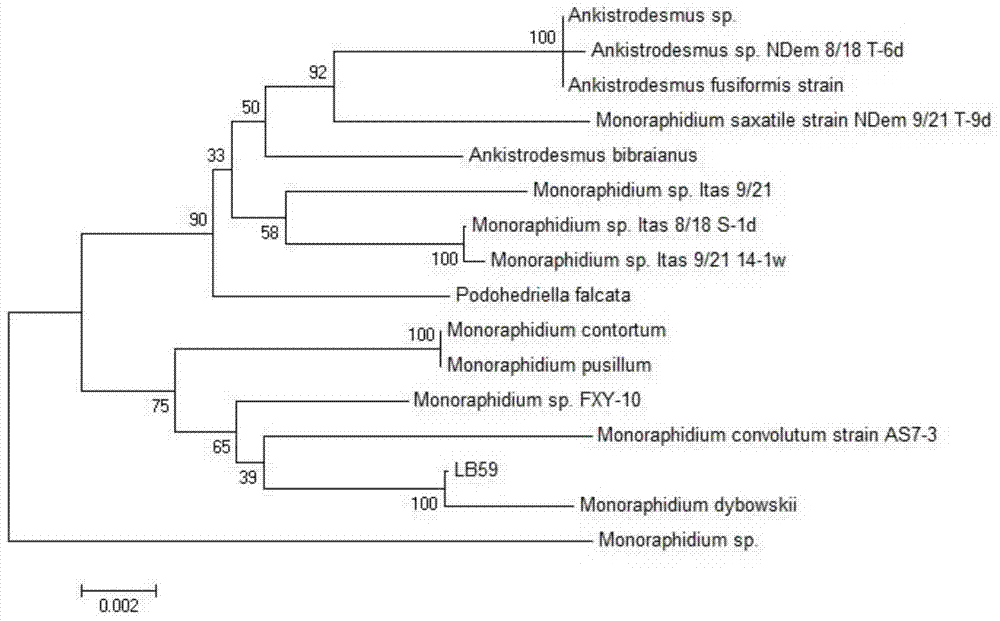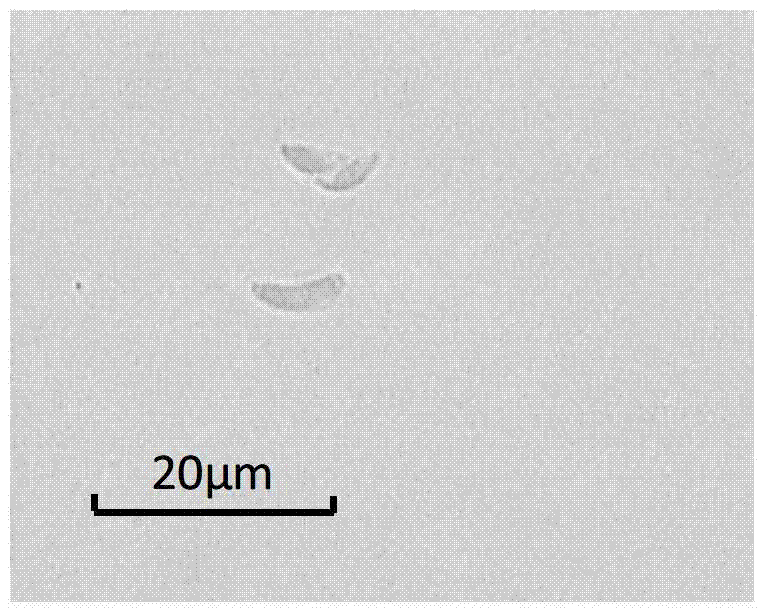Obtaining and application of oil-producing monoraphidium LB59
A technology of monopods and green algae, which is applied in the field of screening and cultivation of oleaginous microalgae, can solve problems such as the shortage of good algae strains, and achieve the effects of reducing costs and preventing damage
- Summary
- Abstract
- Description
- Claims
- Application Information
AI Technical Summary
Problems solved by technology
Method used
Image
Examples
example 1
[0036] Example 1. Semi-continuous cultivation in a circular photoreactor
[0037] Prepare the culture medium according to the medium formula described above, at 0.1 m 2 Inoculate and culture in a circular photoreactor with a culture medium volume of 20 L. Initial OD 680 The value is 0.05, the temperature is controlled at 30-35°C, and the light intensity is 200 μE / m 2 s continuous light, pass CO2 into the culture medium for 1 hour every day 2 , and sample OD every day 680 value, OD 680 When the value reaches 6.0, collect 1 / 2 of the algae liquid and supplement 1 / 2 of fresh medium for semi-continuous culture, and then collect the algae liquid every 5 days to feed the same volume of medium. In the collection container, the pH of Monostipella LB59 was adjusted to 6 with dilute hydrochloric acid, chitosan was added to 5.0 mg / L, and the flocculation and sedimentation efficiency reached over 90% in 30 minutes; the supernatant was removed from the flocculated algae liquid to obtai...
example 2
[0039] Example 2. Outdoor track pool cultivation
[0040] According to the medium formula of the algae strain, the local groundwater in Inner Mongolia was used to prepare the culture medium. 2 Runway pools for open culture (see Figure 4 ), the volume of culture medium was 750 L. The flow rate of the runway pool is controlled by a wheel-shaped agitator to 0.04 m / s; the water temperature is about 30°C during the day and about 24°C at night; the light intensity varies with the weather, and the average light intensity during the day is 600 μE / m2 s, in a dark state at night; sample and measure OD every day 680 value, when cultured to OD 680 When the value reaches 2.0, start to collect 1 / 5 of the volume of algae cell liquid, then add 1 / 5 of the fresh culture liquid for semi-continuous culture, and then collect feed once every 3 days. The collected algae liquid is observed under a microscope and maintains more than 99% pure species, with little contamination by bacteria and other...
PUM
 Login to View More
Login to View More Abstract
Description
Claims
Application Information
 Login to View More
Login to View More - R&D
- Intellectual Property
- Life Sciences
- Materials
- Tech Scout
- Unparalleled Data Quality
- Higher Quality Content
- 60% Fewer Hallucinations
Browse by: Latest US Patents, China's latest patents, Technical Efficacy Thesaurus, Application Domain, Technology Topic, Popular Technical Reports.
© 2025 PatSnap. All rights reserved.Legal|Privacy policy|Modern Slavery Act Transparency Statement|Sitemap|About US| Contact US: help@patsnap.com



